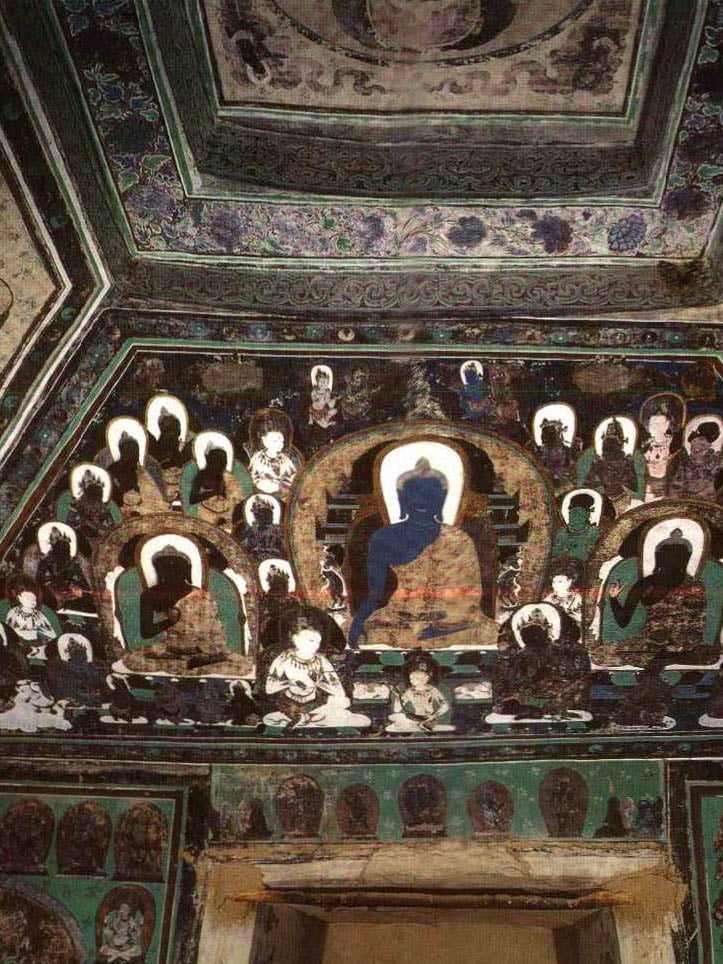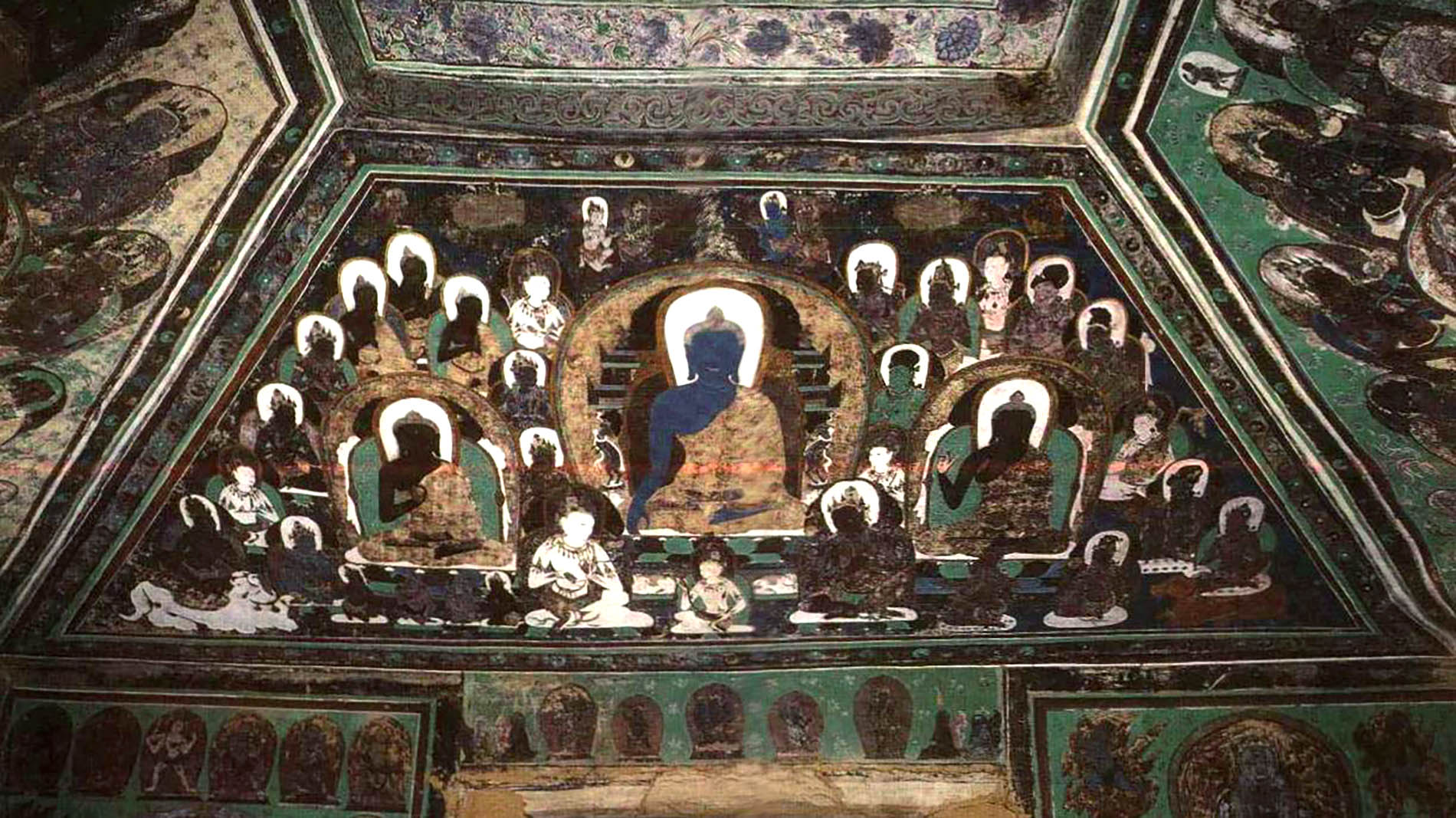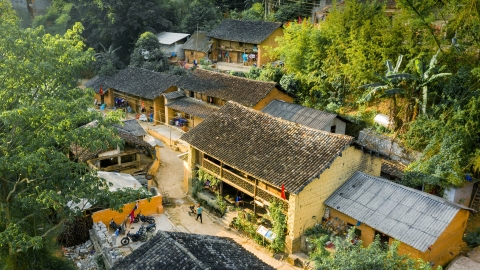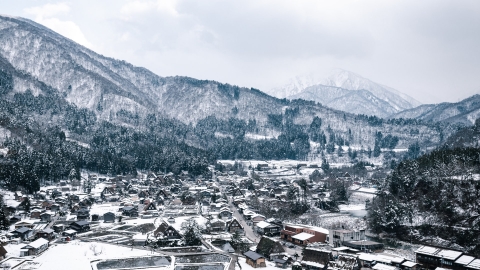One thousand years ago, a series of caves known as the Mogao Caves were located on the edge of the Gobi Desert, near the town of Dunhuang in western China. The complex was dubbed “the world’s number one cave,” with 492 caves and more than 2,400 Buddha statues, along with countless murals, spanning an area of 45,000 square meters.2.
Among them, there is a room over 150 meters high, inside which is stored a huge amount of documents up to more than 500 sets of books and manuscripts, commonly called "Dunhuang Library". According to estimates, Dunhuang Library has about 40,000 cultural artifacts including documents, scrolls, oil paintings, silk paintings, and paintings on paper.
But no one knows who, for what reason, sealed the entrance to this place, leaving these treasures of knowledge and culture hidden for 900 years. When discovered and excavated in 1900, the Dunhuang Library was hailed as one of the greatest archaeological discoveries of the 20th century, even on par with the tomb of Tutankhamun and the Dead Sea Scrolls.

Buddha statues and murals found in the Mogao Grottoes complex - Photo: Internet
An accidental discovery thanks to… cigarette smoke
During the Middle Ages, Dunhuang was a prosperous city. It was a famous center of Buddhist beliefs, and many pilgrims traveled long distances to visit the cave shrines located on the steep cliffs on the outskirts of the city. But after the Ming and Qing dynasties, that is, in the early 20th century, this area was buried in the desert, and the caves became dilapidated and desolate.
It wasn’t until 1900 that a Taoist named Wang Yuanlu stepped forward to take charge of the area. One day, while clearing sand, the Taoist noticed that his cigarette smoke was drifting toward a large shrine located to the north of the cave. There, he found a crack in the wall behind the shrine. Curious, Taoist Wang knocked on the wall and discovered that there was an echo inside, indicating that the back was empty. After breaking the wall, he found a room filled with treasures such as handwritten scriptures, documents, silk paintings, paintings, magical artifacts, etc., stacked several meters high.

The entrance to Dunhuang Library is blocked behind a wall.

Frescoes, inscriptions and ancient documents found in Dunhuang Library
Although he could not read the ancient texts, Wang Yuanlu knew he had found a valuable treasure trove. He immediately contacted local officials and offered to send the documents in the secret room to Beijing for research. But at this time, the city was short of cash and preoccupied with the Boxer Rebellion, and his request received no support.
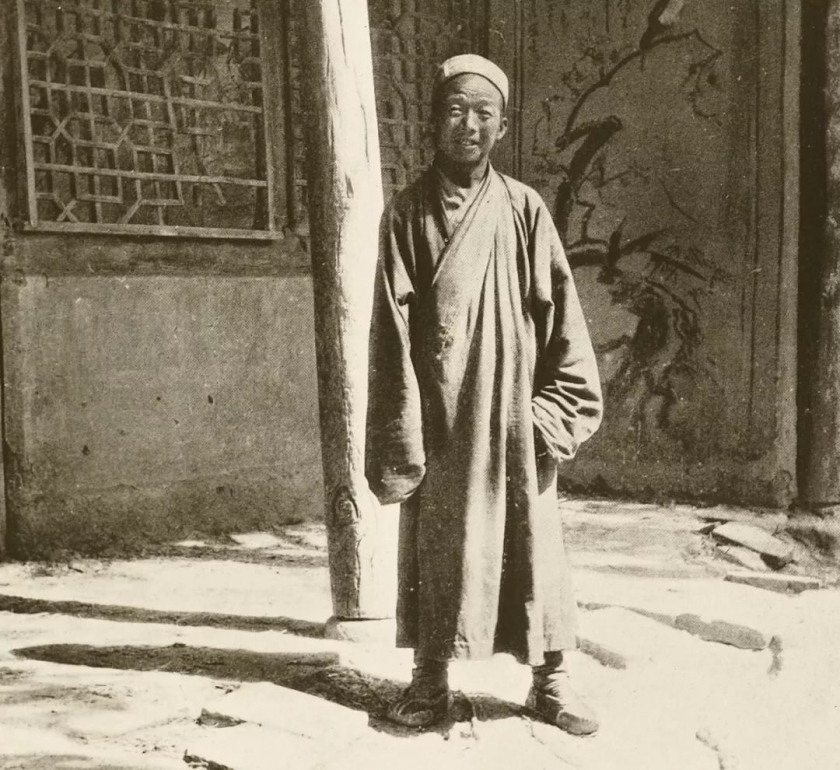
Photo of Taoist priest Vuong Vien Luc - Photo: Internet
However, the news quickly spread thanks to caravans in Xinjiang. One of the first to hear of this shocking discovery was the Hungarian Indologist and explorer Aurel Stein, who was then on his second archaeological expedition in Central Asia. Stein hurried to Dunhuang, and waited for two months to meet the Taoist priest Wang Yuanlu at the site where the treasures were found.
The Taoist priest Wang agreed to meet Aurel Stein, but he was cautious, not wanting to let any of the documents out of his sight, and was quite upset when Stein mentioned buying them. Stein promised that he would use the precious documents to follow in the footsteps of Xuanzang, the 7th-century monk who made a pilgrimage to India and is the protagonist of Journey to the West. Eventually, the Taoist priest was persuaded, and agreed to sell Stein some of the ancient documents and scrolls for 130 pounds.
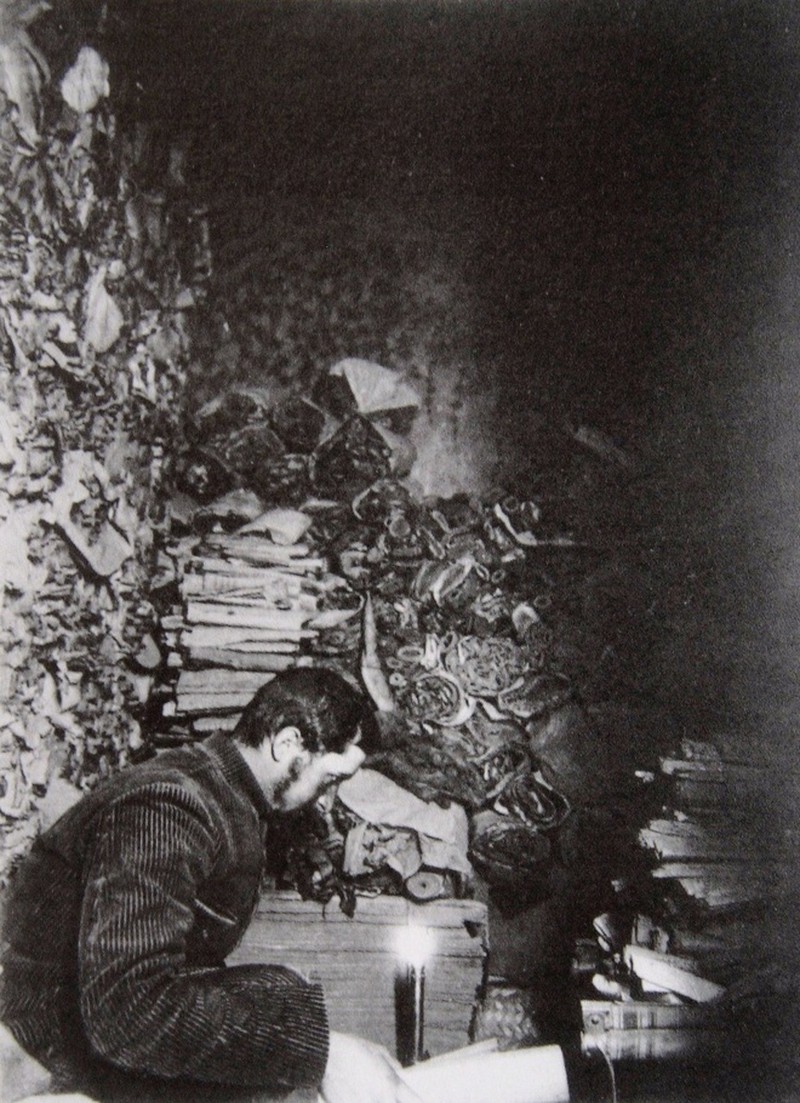
French expert Paul Pelliot searches for documents at the Dunhuang Library in 1908 - Photo: The Musée Guimet
The news of the Dunhuang Library sparked a race to find Oriental treasures among European powers. After Stein came Paul Pelliot, a French Sinologist. Pelliot stayed up all night reading scriptures at breakneck speed by candlelight, then took away some of the most valuable items in the Library. Thus, foreign expeditions from England, Russia, Hungary, Japan, etc. came to the Mogao area to search for treasures. By 1910, when the Chinese government ordered all antiquities to be transferred to Beijing, only about one-fifth of the original documents remained in the library.
"Dunhuang Studies" - From a Hidden Library to a Worldwide Academic Discipline
The Dunhuang Library contains thousands of documents recorded in at least 17 languages and 24 scripts - many of which were thought to have disappeared forever for centuries, or were mentioned only in a few ancient records.
These documents preserve the cultural and historical fabric of Dunhuang itself, from the ancient days when Buddhists worked side by side with Manichaeans, Christians, Zoroastrians, and Jews. They also include many scriptures copied by the Chinese from Tibetan prayers translated from Sanskrit. Because of this diversity and breadth, scholars agree that the research methodology should be equally inclusive and varied.
However, over the course of several decades, the study and sharing of scholarly findings from the Dunhuang Library proved difficult, as Stein and other treasure hunters of the time dispersed the Library's holdings far and wide, finding them in dozens of libraries and museums around the world.
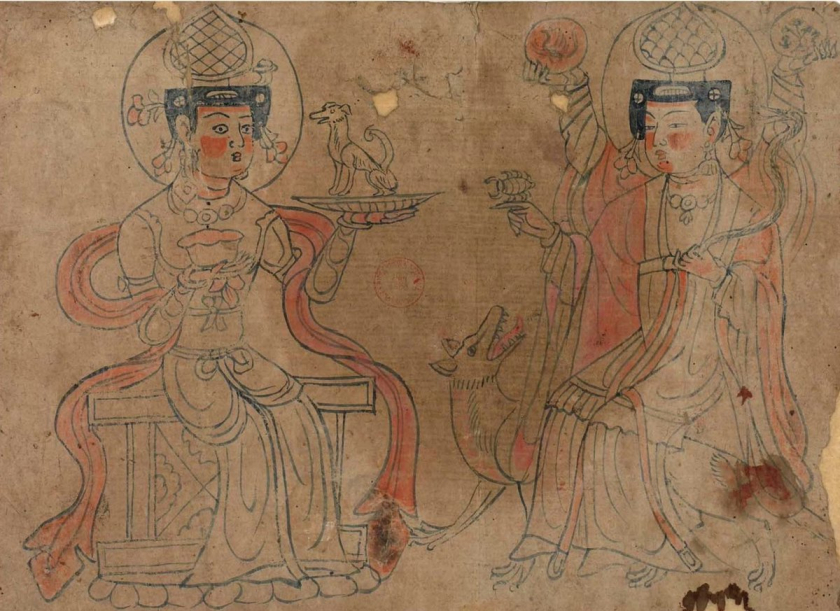
Painting of two goddesses of the Sogdian civilization, in the Dunhuang Library
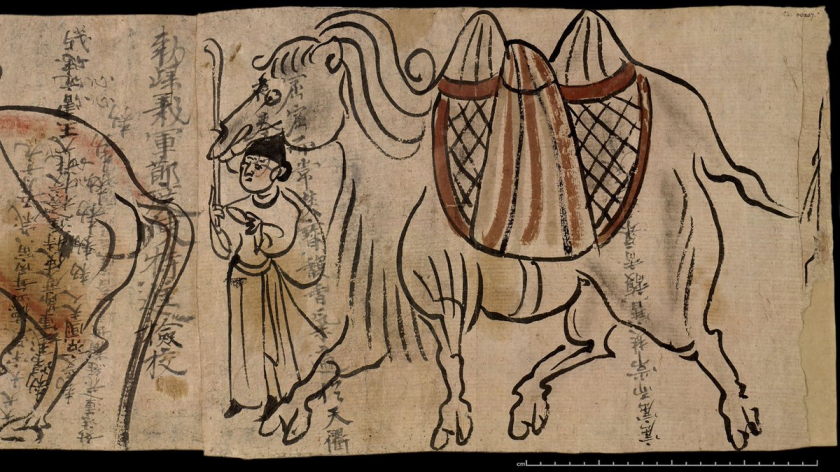
Camel painting
Since 1994, a global digitization program has been established, allowing scholars and researchers to reconstruct individual documents they have in their possession and then upload them to the program. There, the contents of many Dunhuang projects are stored and discussed, and preserved for future generations.
Thanks to digital tools and modern technology, many documents have been restored, protected from corrosion and photographed. From there, researchers have read many valuable (and very interesting) records from thousands of years ago: the Diamond Sutra - one of the earliest teachings of Buddha, a prayer written in Hebrew by a merchant on the way from Babylon to China, a contract to buy a girl as a slave to cover a debt of a silk merchant, a page of a book about fortune telling written in Turkish Runes, or the world's earliest complete star map...
The documents and scriptures found in the Dunhuang Library were also applied to the study of culture, history, and religion and their formation and fusion in Asia through the Silk Road. At the same time, thanks to this, people discovered the development of paper and printing in China. It turns out that printing began as a form of copying for prayers, because the Buddha taught that the merit accumulated from reading and chanting sutras is more valuable than gold, silver, and jewels.

Printing began as a form of copying for prayers, as the Buddha taught that the merit accumulated from reading and chanting sutras was worth more than gold, silver, and jewels - Photo by Jin Xu
However, until now there is still no exact answer to the biggest mystery of the Dunhuang Library: what was it originally used for, and why was it sealed? Based on the inscriptions in the remaining documents, people can guess that the former caretaker of this library was the monk Hongbian, who once led the Buddhist community in Dunhuang. In 862, after his death, his statue was built inside a temple in the Mogao Grottoes. During the Western Xia period of Dunhuang's domination (after 1049), the monks in the Mogao area, in order to escape, placed their historical archives in this room, and built a wall outside to seal it. After the war ended, none of the monks returned, and the room became a secret that no one knew about. According to researchers, this is the most reasonable hypothesis to explain why the Dunhuang Library was sealed for nearly 1,000 years.
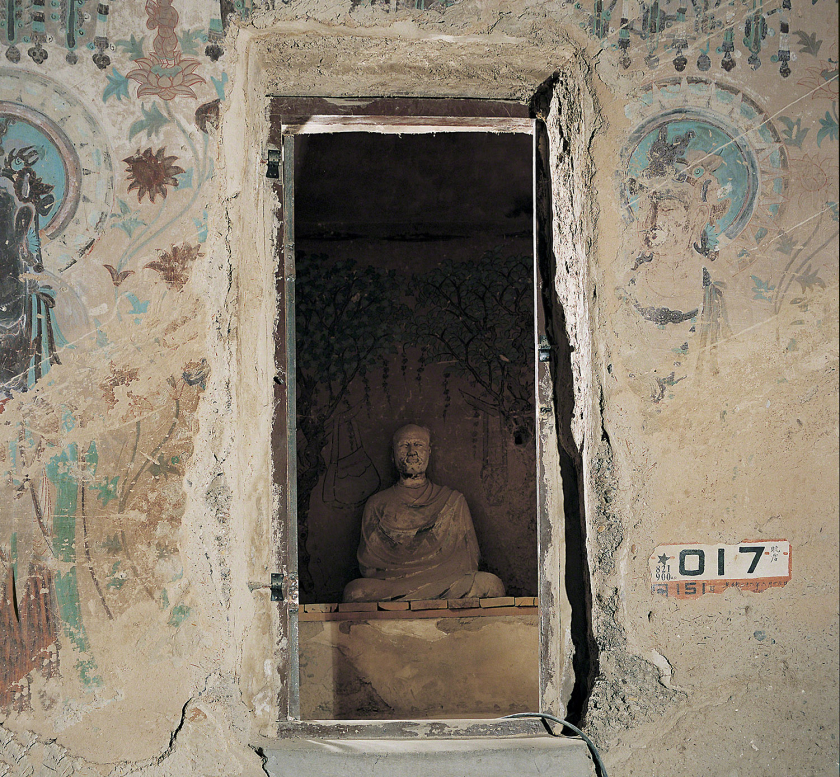
Statue of Hongbian monk - Photo: Dunhuang Academy
Today, an entire academic discipline has formed around the documents it houses, called Dunhuang Studies. World scholars conduct extensive research on it, and many world-scale Dunhuang Studies conferences have been held. However, studies have also pointed out alarming facts about the environmental problems surrounding the Library in particular and the Mogao Grottoes in general, as desert sand is constantly blown in, threatening the existence of this area.





